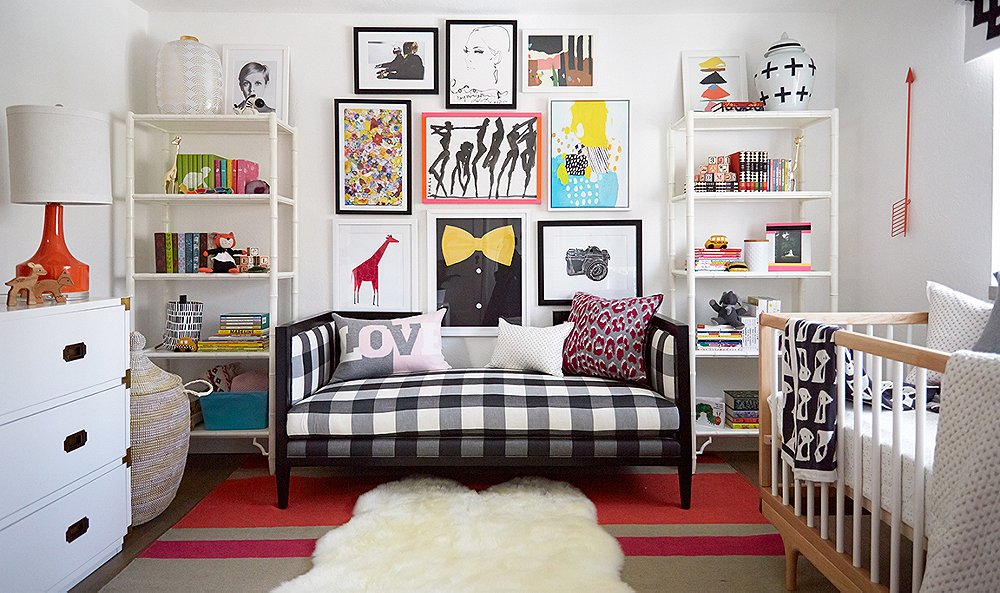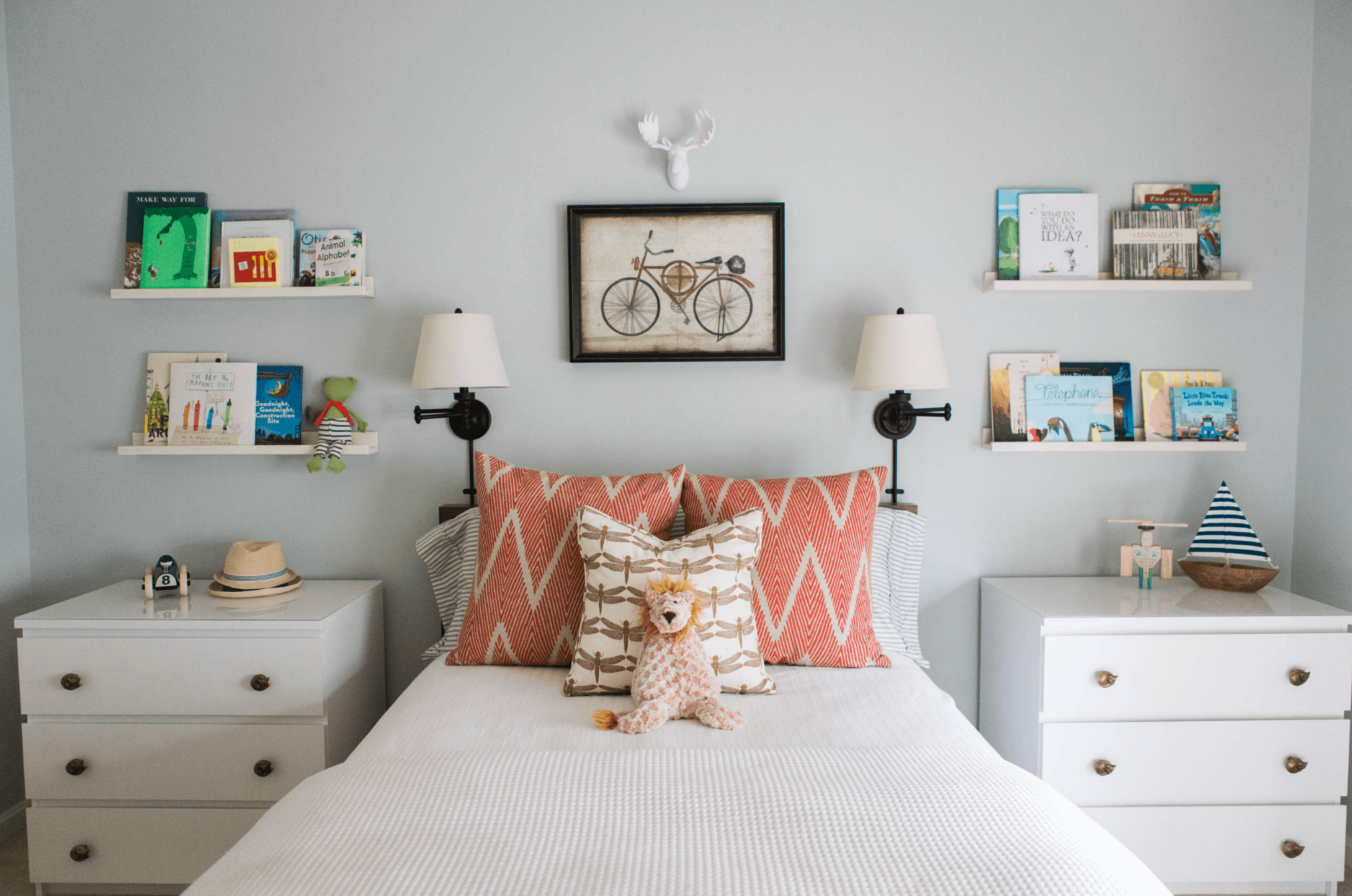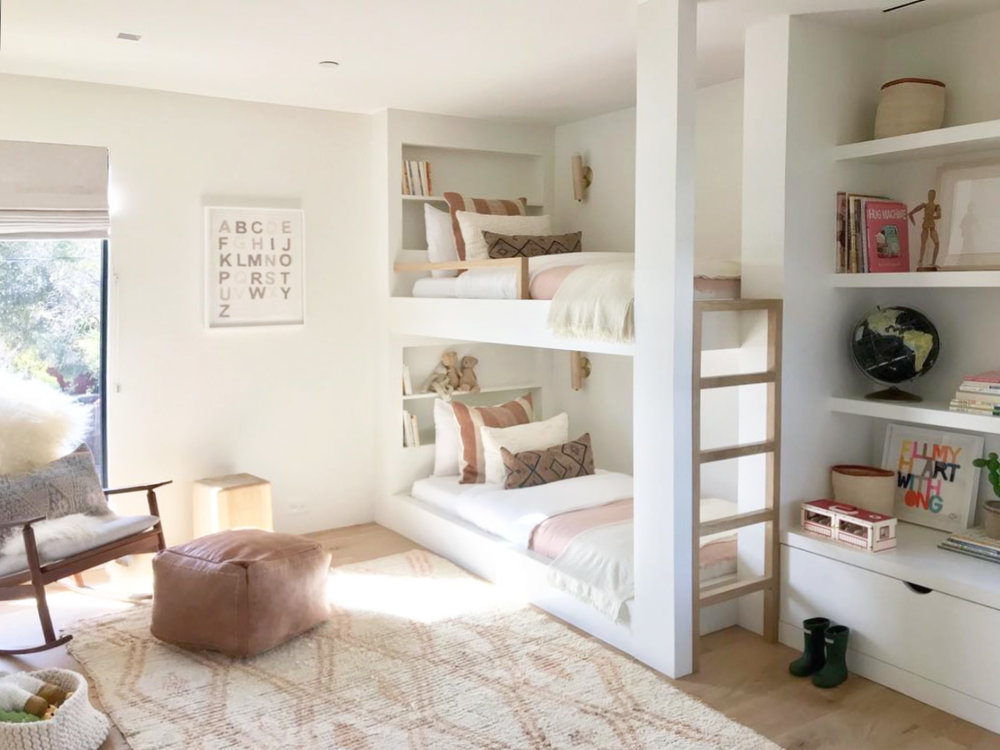Your child’s room is his or her sanctuary. It’s personal space within your home. It’s a place that should feel safe and comfortable, a place where your child can get good and restful sleep. It should be a place for stress-free play, an oasis from a loud and complex world that can sometimes be confusing, upsetting, and scary for even the most well-adjusted children.

via ?
But creating this perfect room isn’t easy. You shouldn’t do it without your child’s input, but your child can’t do it without you. Not every dream your child has for his or her room will be feasible, and not everything that you’d like to see in the room will be embraced by your child. At the same time, there are some things that both you and your child should want for their bedroom. Here’s what you need to know about creating the perfect bedroom for your child.
Creating a comfortable place to sleep
A bedroom is called a bedroom for a reason. Perhaps the single most important thing about your child’s bedroom is the bed itself, including the mattress and bedding. You want your child to have a comfortable bed for sleeping, and a bed that your child loves enough to make bedtime fights at least a little bit easier.

via One Kings Lane
Fortunately, it has never been easier to get a quality mattress at an affordable price. Improved and ever-cheaper memory foam technologies have put once-fancy beds and mattresses within financial reach for many parents. That’s great news, because as your child outgrows his or her baby bed, a comfortable “big kid” bed now within reach.
Don’t forget about your kids pillows, either. Pillows are an important factor in a good night’s sleep. But fun decorative pillows will add some flair. Let your child try out pillows of different levels of firmness and see if they’re able to articulate a preference. The pillow that helps your child sleep better is a great investment — as every parent knows, a tired child is not pleasant to be around every day.
Bed sheets, comforters, and pillowcases are necessary expenses too, of course. Don’t let your interior design instincts get in the way of your child’s preferences for cool kids sheets and pillowcases. Remember, it’s not your room. Besides, you may end up paying for your aesthetics down the line: your child may be a lot less willing to follow bedtime rules if you didn’t let him or her get those cool Star Wars sheets.
Set rules for what stays inside or outside the bedroom
We all knew kids growing up who had computers or TVs in their rooms. If that’s your parenting style, that’s OK — but whatever you decide in terms of screens, electronics, and other possessions and toys in a bedroom, you need to set and maintain expectations.

via Apartment Therapy
This is one area of bedroom planning where your role is to be a parent instead of a collaborator. Read up on the impact of screen time on kids, and decide what sorts of devices you want to allow where. Set up parental controls on the devices, and set up real-life parental controls by making your rules clear to your child. Make your decisions first, and then outline them clearly.
You should also set expectations about where other toys and objects should be. Set expectations and rules for these, too. Make sure your children know how clean their rooms should be and when, and when it’s appropriate to be playing or reading versus when they need to be in bed with the lights out.
Kids’ room organization
Speaking of kids’ stuff and messy rooms, you need to think about bedroom organization. As all parents know, kids can let their toys and other possessions get out of hand fast. Kids are messy by nature. Dealing with this will involve outlining expectations and setting rules as explained above, but that’s not the only factor here.

via FreshHome
Kids aren’t organizational geniuses or natural cleaners. They’re going to do a better job of keeping their rooms neat and tidy if those rooms are organized in sensible and easy-to-understand ways. So invest in shelving, drawers, and other organizational objects and pieces of furniture. Make sure that everything has its place. If your child doesn’t know where something goes, it’s going to stay on the floor. If an object seems equally at home on any shelf or in any drawer, it’s going to migrate and mingle with other objects and help create an organizational and aesthetic mess.
Choose simple organizational techniques, and consider bins and drawers that hide clumsy collections of bulky kids’ toys. Use open shelving for more aesthetic things, like books.

via Winter Daisy
Work with your child
When it comes to creating the perfect bedroom for your child, a little give-and-take is key. You should set rules on what belongs in a room and should pick out essentials like mattresses and major pieces of furniture. But let your child have input on the decor, the bedding, and which toys (within the rules) get space on shelves and in bins and drawers. Together, you can create a space that is comfortable and safe for your child.
Thanks to iScream Shop for collaborating!
























